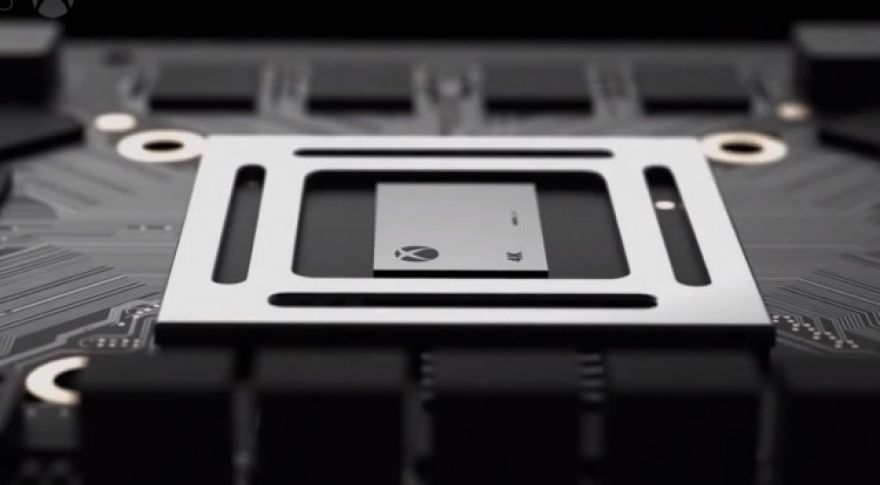
Once best known for an innovative dashcam solution that could be added to any car and helped alert drivers to various dangers, Israeli vision tech powerhouse Mobileye evolved its strategy to focus entirely on OEM products and technology with automakers over the last few years. has grown to dominate that market, landing partnerships with more than two dozen carmakers and Tier 1 suppliers. Now that approach has paid off handsomely for Mobileye’s shareholders, with an agreement to be acquired by Intel for $15 billion ($63.54 per share). Lidars get a lot of press, but cameras are at the heart of self-driving There has been a lot of attention paid to lidar technology for self-driving cars, especially with the recent lawsuit by Alphabet’s Waymo against Uber for alleged theft of intellectual property.

Astronomers have been puzzling over fast radio bursts (FRB) for the last decade, but there’s not yet any good explanation of these high-energy radio blips. Less that two dozen FRBs have been observed since then, all of which come from outside the Milky Way galaxy. Now that fast radio bursts have defied explanation for this long, scientists are starting to wonder aloud if these extremely high-power emissions could be artificial. Could be sending out these radio pulses? A in Astrophysical Journal Letters lays out an interesting hypothetical. Despite being very high-energy, FRBs are incredibly short in duration. They last only a few milliseconds and can be easy to miss.

The second-generation Mazda CX-5 compact crossover / SUV stands as the best choice for driving enthusiasts who need an affordable crossover to haul gear or family members. The 2017 CX-5 is also emerging as the category’s technology champ with a head-up display, smart blind spot detection aler t, full-range adaptive cruise control, standard LED headlamps, and an intelligent all-wheel-drive system. Mazda makes a fair claim that the CX-5 has “class above” technology more in line with what Audi, BMW, Lexus and Mercedes-Benz offer. “We know we’re already better than [Honda] CR-Vs and such, so we benchmarked upscale,” Mazda’s chief engineer proclaims.

Ever since the launched, gamers have been reporting a specific and unusual problem with the console. Its Joy-Con controllers — the diminutive handheld devices that detach from the tablet when it’s docked and attach to its sides for handheld play can have trouble maintaining a connection to the console when undocked. The issue is particularly severe with the left controller. Last week, a teardown video by Spawn Wave explained why the left controller has so many problems. The right Joy-Con controller has an antenna running along the inside edge. The left controller has an antenna worked into the circuit board, it sits against your left hand when you use the device, and the antenna itself sits next to a piece of metal that holds the circuitry for the Joy-Con’s analog stick.

With Sony’s PlayStation 4 Pro now shipping, there’s a great deal of speculation around Microsoft’s upcoming Project Scorpio. Microsoft has implied it wants to leapfrog both the and the by a significant margin, but details on how these improvements would impact the existing Xbox One ecosystem have been few and far between. While Scorpio will have extra bells and whistles for 4K players, the console’s advantages won’t be reserved for them, Windows Central . Existing games with dynamic resolutions will hold their target resolutions and frame rates more often, even without patches and updates. Given the horsepower Scorpio is supposed to pack relative to the Xbox One, “more often” really ought to be “all the time,” since the new platform is supposedly so much more powerful than its 2013 predecessor, but we’ll have to see how that plays out.

Google has finally revealed all the details on its upcoming 4K digital whiteboard known as the Jamboard. The device was first unveiled back in October, but Google wasn’t talking about pricing except to say it would be under $6,000. Google now says the Jamboard will come in at $4,999. Yes, that’s a lot of money, but it’s less expensive than a lot of competing enterprise products. However, it also requires a management and support contract that costs $600 per year. The Jamboard is essentially a 55-inch 4K TV with touchscreen functionality (up to 16 simultaneous touch points). It also has a lot of other hardware bells and whistles, including NFC, a webcam, and Chromecast support so you can beam content from nearby devices to the Jamboard.

Baxter is a robot developed in 2012 by Rethink Robotics, the project of former CSAIL director Rodney Brooks. Now a research team from Boston University and MIT’s CSAIL have successfully enabled Baxter to interpret and obey brain waves in real time. It’s a step toward smoother control of, and coexistence with, robots: being able to remotely take action, by simply thinking “no.” Their setup gave Baxter a simple sorting task and a human judge wearing an EEG cap. Baxter was tasked with sorting things into two bins correctly. When it made a mistake, the human judge was asked to “mentally disagree” with it.

Tivoli Audio’s gets a complete makeover 17 years later. The Model One Digital, announced this week, adds Bluetooth and Wi-Fi connections to stream music from your smartphone, PC, or the Web. It still tunes FM directly, but Tivoli dropped AM radio. Adding an optional second speaker (above photo) turns it into a stereo radio, and adding more speakers turns it into a multi-room system. The display is now digital. There’s only one visible knob — the volume control — and the circular bezel around the display is the tuning knob. The price is now $300, or twice what the classic Model One radio currently costs.

A new bill introduced by Virginia Foxx (R-NC) and approved by the House Ways and Means Committee would allow corporations to force employees to undergo genetic testing — and then share those results with third parties. In theory, this is already illegal, thanks to a 2008 law known as GINA. This type of behavior is also regulated by the Americans With Disabilities Act (ADA). The new House bill, , gets around these issues by preemptively declaring that workplace wellness programs offered in conjunction with an employer’s sponsored health care plan shall be considered to be in compliance with GINA, the ADA, and other workplace protections.









